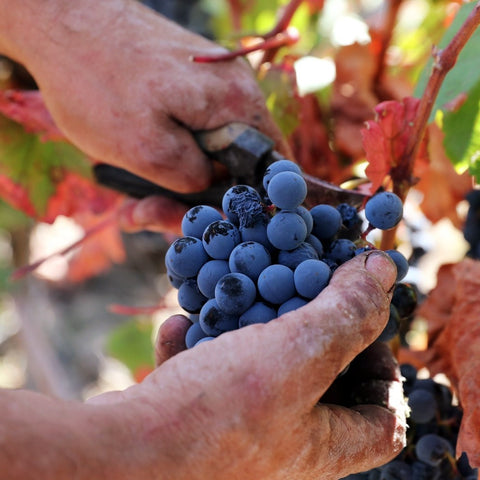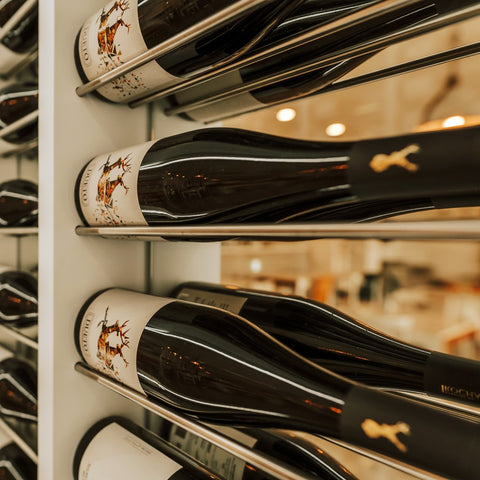
5 techniques that transformed the world of wine
Share
In the world of wines, tradition and innovation go hand in hand. The art of viticulture has evolved considerably over time, and today, thanks to a series of innovative techniques, this world has never been more exciting than it is now. After all, wine is not just a drink, it is a narrative that unfolds with each harvest, a celebration of the land and human labor, and living proof that passion and creativity can transcend generations.
1 - Introduction of oak barrels
The introduction of oak barrels into the world of wine represents one of the most significant and revolutionary techniques in the history of oenology. This method forever changed wine production, giving it complexity and depth of flavor that were unattainable in the past.
Oak barrels are used for the fermentation and aging of wine. Oak itself, being porous, is capable of providing a unique interaction between wine and wood, resulting in the release of various aromatic compounds, such as vanilla, coconut and spices, which enrich the flavor of the wine. Furthermore, the oak barrels contribute to controlled oxygenation, softening the tannins and improving the wine's texture.
Wines aged in oak barrels acquire flavor nuances that vary depending on the type of oak, the toasting of the barrel and the aging time. This factor allows winemakers the freedom to personalize the sensory profile of wines, creating distinctly authentic wines.

Discover more about oak barrels
2- Organic and biodynamic agriculture
In recent years, organic agriculture has emerged as a promising philosophy that, with an environmental aspect, is present both in the earth and in the mouth. The contemporary scenario, full of environmental challenges, has caused a major change in the mentality of wine producers. Many producers currently embrace biodynamic methods and refuse to use chemicals in the vineyards.
This eco-friendly approach not only addresses growing environmental concerns, but also produces pure and authentic wines. As we taste it, we appreciate its complexity and celebrate the commitment to sustainability. Each glass is a toast to the health of the earth and a declaration of passion for our planet.

3- Stainless steel vats
The use of stainless steel vats is, in fact, one of the greatest innovations in the world of wine. Vats offer a series of benefits in winemaking. One of its most distinctive characteristics is its ability to maintain an airtight environment, protecting the wine from external influences. This factor is essential to ensure that the wine maintains its character and freshness, without being affected by external agents such as oxygen.
Furthermore, stainless steel vats are highly hygienic and easy to clean, which helps to avoid cross-contamination and contributes to the production of purer wines. Unlike oak barrels, which can contribute spice and wood flavors, stainless steel is flavor neutral, which allows the grapes and terroir to shine clearly.
The temperature inside the vats is precisely controlled, which is essential for the fermentation and aging of the wine. This factor helps winemakers adjust winemaking conditions according to the specificities of each harvest.

4- Terroir Analysis
“Terroir” is a French word that encompasses the idea that the environment in which grapes are grown plays a fundamental role in the flavor and personality of wines. Terroir includes the soil, climate, topography, and even the surrounding flora and fauna.
Soil analysis, for example, plays a crucial role, as several winemaking professionals carry out tests to determine the chemical composition of the soil, its drainage and its water retention capacity. Such information allows winegrowers to have greater information regarding grape varieties and their characteristics. The same grape variety can produce different wines and different soils, and this detailed understanding of terroir is what allows the creation of truly unique wines.

5- Wines and Artificial Intelligence
Artificial intelligence technology is entering the world of wine in an innovative way. Applications and devices equipped with this technology are capable of analyzing the chemical and sensorial composition of wines. It can even predict, for example, your aging potential.
For example, several wines are already reaching consumers with QR Codes containing all the information relating to the wine, such as its tasting notes and grape varieties. Furthermore, there are already some applications that, when taking a photo of the bottle, the application provides information and comments from different consumers about the wine.
The world of wine is constantly evolving, and in addition to these techniques mentioned here, there are still many others to explore. Winemaking has never been as diverse as it is today. Whether you are lovers of environmentally friendly wines or technology lovers, wine is always an art that is discovered in new versions with each bottle.

May your next glass be enriched by lots of knowledge and the innovation that surrounds it!
Cheers!